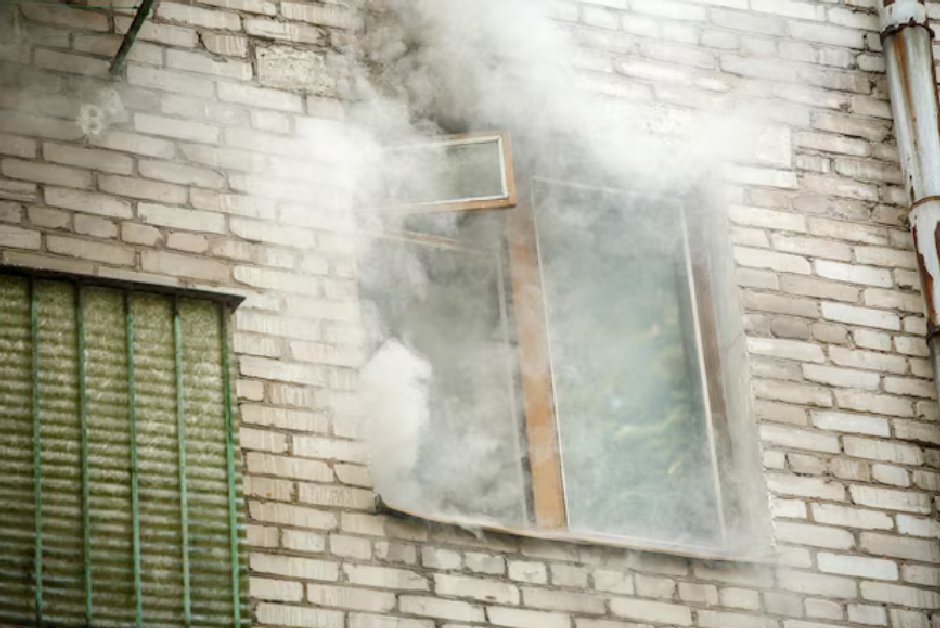Smoke damage can be a devastating aftermath of a fire, leaving behind a trail of destruction that goes beyond what meets the eye. The noxious smoke permeates every nook and cranny, leaving an unpleasant odor and discoloring surfaces, making it a challenging issue to tackle.
In this article, we’ll explore the intricacies of the process behind smoke damage clean up, shedding light on the various types of smoke damage, the initial assessment and safety measures, the cleaning and restoration techniques, the reconstruction and repairs required, and the preventive measures to minimize future incidents.
KEY TAKEAWAYS
- Smoke damage comes in three main types: dry, wet, and protein, each requiring specific cleaning approaches.
- Initial assessment by professionals identifies the source, extent, and safety hazards before cleanup begins.
- Cleaning processes include air purification, surface cleaning, and content restoration, and may require reconstruction.
- Prevention through maintenance, proper equipment, and fire safety practices minimize future smoke damage incidents.
Types of Smoke Damage
When it comes to smoke damage clean up, the type of smoke residue plays a crucial role in determining the appropriate restoration approach. Dry smoke damage, caused by high-temperature fires, leaves behind a dry, powdery residue that can be relatively easy to clean. Common sources of dry smoke damage include electrical fires and kitchen fires.
On the other hand, wet smoke damage, resulting from low-temperature smoldering fires, can be particularly challenging to address. The sticky, pungent residue left behind can be difficult to remove, and common sources include cigarette smoke and furnace puffbacks.
Another type is protein smoke damage, caused by the burning of organic materials. This damage can lead to discolored surfaces and an unpleasant odor, often stemming from kitchen fires or burnt food.
The Behind
Initial Assessment and Safety Measures
The first step in the smoke damage clean up process is to call professional restoration services. These experts are equipped with the knowledge and tools to tackle the job efficiently and safely.
After securing the property, addressing any safety hazards, such as structural damage or electrical issues, is crucial. The professionals will then identify the source of the smoke damage and assess the extent of the affected areas and types of surfaces.
A thorough initial assessment sets the stage for an effective clean up process, ensuring that no stone is left unturned and all necessary precautions are taken to protect both the property and the individuals involved.
Cleaning and Restoration Processes
Air purification and deodorization are essential components of the smoke damage clean up process. Professionals employ specialized equipment like HEPA air scrubbers, ozone generators, thermal foggers, and hydroxyl generators to eliminate stubborn odors and purify the air.
Surface cleaning is another crucial aspect, involving both dry cleaning methods (vacuuming, dry sponging) and wet cleaning methods (wet wiping, immersion cleaning). Specialized cleaning solutions and techniques are often utilized to effectively remove smoke residue from various surfaces.
In addition to cleaning surfaces, content cleaning, and restoration are equally important. This process involves meticulously cleaning and restoring furniture, electronics, and other belongings affected by smoke damage. Techniques like ultrasonic cleaning and ozone treatment may be employed, depending on the material and extent of the damage.
Reconstruction and Repairs
After the initial cleaning and restoration phases, reconstruction and repairs become necessary. This may involve replacing damaged building materials, repainting or refinishing surfaces, and addressing any structural damage caused by the fire or smoke.
Restoring or replacing HVAC systems is also a crucial step, as these systems can harbor smoke residue and odors, further exacerbating the issue if not addressed properly. Coordinating with contractors and specialists is essential to ensure a seamless and comprehensive repair process.
Don’t forget, that statistics show that properties that undergo professional smoke damage restoration can often regain up to 90% of their pre-loss value, emphasizing the importance of proper reconstruction and repairs.
Prevention and Maintenance
While the smoke damage clean up process is essential, prevention and maintenance are key to minimizing the risk of future incidents. Regular maintenance and inspections can help identify potential fire hazards and address them before they escalate. Installing smoke detectors and fire suppression systems, as well as developing an emergency preparedness plan, can go a long way in mitigating the impact of a fire.
Practicing fire safety measures, such as keeping combustible materials away from heat sources and properly disposing of ashes, can also help prevent fires from occurring in the first place. Maintaining proper documentation and records throughout the clean up process is also crucial, not only for insurance purposes but also for future reference and planning.
Concluding Thoughts
Smoke damage can be a daunting challenge, but understanding the intricacies of the clean up process can make a significant difference. By following the steps outlined in this article, from initial assessment to reconstruction and prevention, you can effectively tackle smoke damage and restore your property to its former glory. Remember, professional assistance is invaluable, and prompt action can minimize further damage and ensure a successful restoration.






